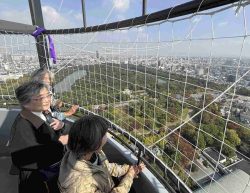Okayama: Shrine Offers 700 Kinds of Charms, from the Common to the Unique; ‘To Have Charms to Meet Every Visitor’s Wish’
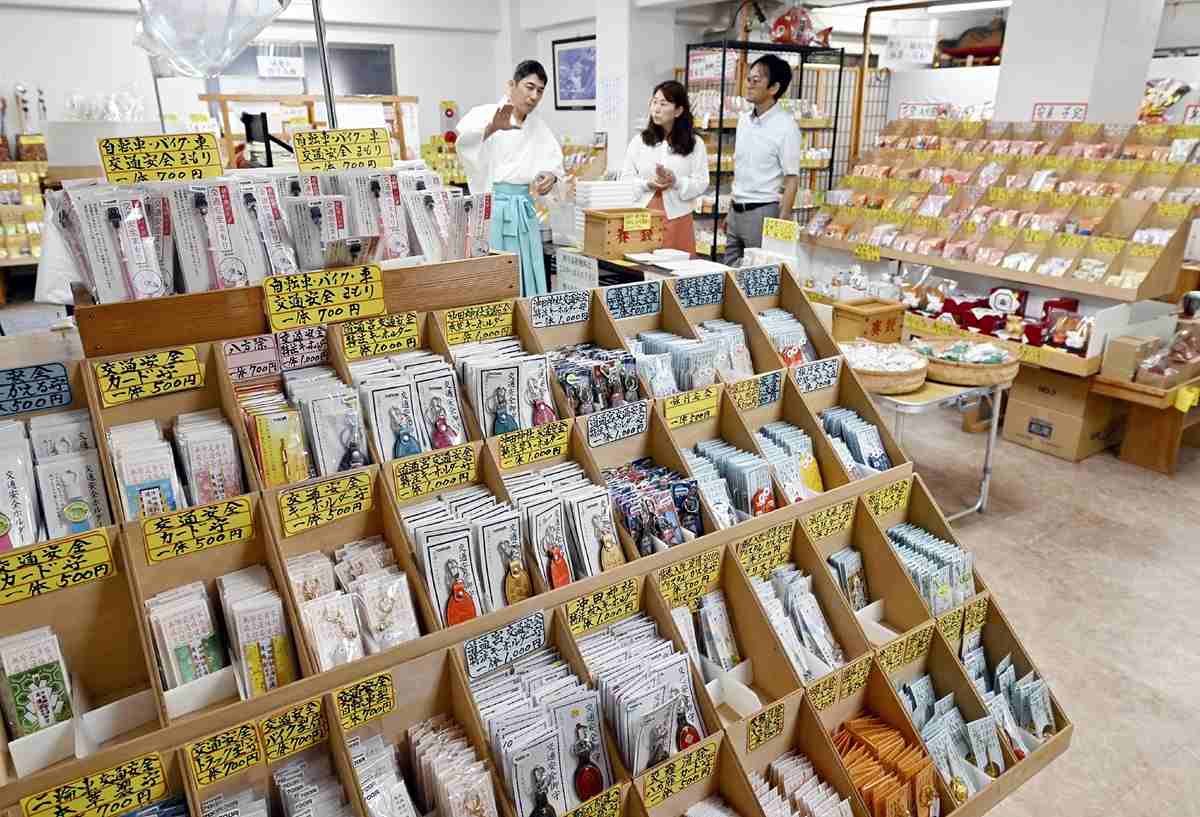
A wide variety of charms are on display at Okita Shrine in Chuo Ward, Okayama City.
11:05 JST, August 31, 2024
OKAYAMA — Many people in Japan buy charms from a shrine, either for themselves or for someone else, and the charms are usually tied to their bag or placed inside their wallet to wish for good luck or safety.
On the first floor of the worship hall at Okita Shrine near downtown Okayama City, roughly 700 kinds of charms can be found inside, an unusually large variety for one shrine to sell.
People tend to carry them with the hope that their wish will come true, but are there really that many different kinds of wishes?
Why so many?
Okita Shrine is said to have been established in 1694 to protect a newly developed rice field at the time. However, why does one shrine sell so many kinds of charms?
“Visitors often tell me, ‘I wish there was a charm like this,’” said Shunji Hata, the 72-year-old chief priest.
Every time he heard such a comment, the chief priest would put in an order for a new charm. He has helped create new charms in this way for the 50 years he has been in his position, leading to the wide variety at the shrine.
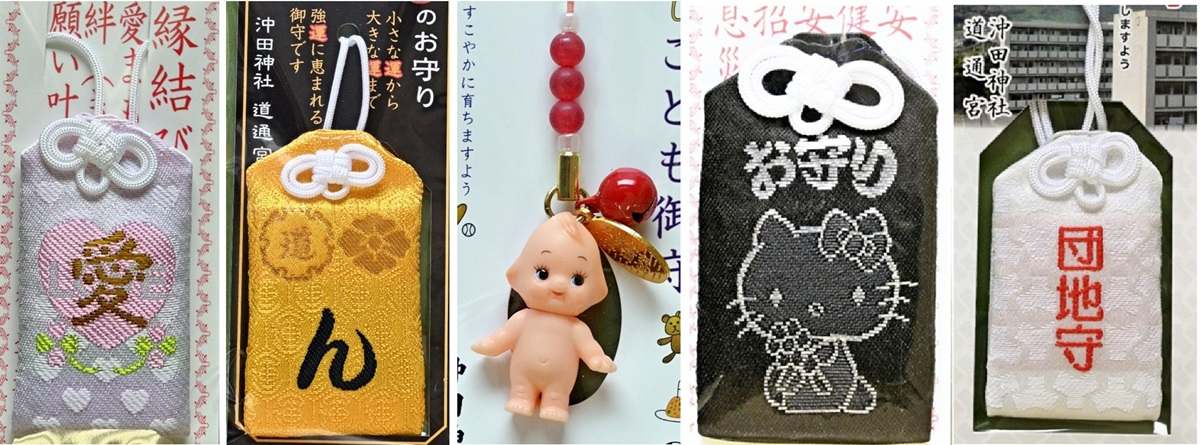
From left, a charm to find love, one for good luck, one for a child’s growth, a charm featuring Hello Kitty and one to wish for the residents of housing complexes to live fulfilling lives
Charms for a successful business, family safety, finding a partner, passing exams, academic achievement and eliminating bad luck are commonly found at shrines. However, the charms found at Okita Shrine range from the common to the unique.
For example, sisters in their 20s from Setouchi, Okayama Prefecture, visited the shrine many times for their mother after seeing it on TV. Their mother was about to undergo surgery, so they got two charms, one for sealing away cancer and another to ensure a successful surgery. They said the charms were perfect for what they were wishing for.
Inspired by famous people
The shrine also has charms that can be placed in unique places or carried in different ways.
There are charms that can be placed on a company’s servers to protect computers, ones that are card-shaped and can be carried inside a smartphone case, ones that can be attached to a motorcycle, scooter or bicycle, as well as ones that can be attached to a pet’s collar.
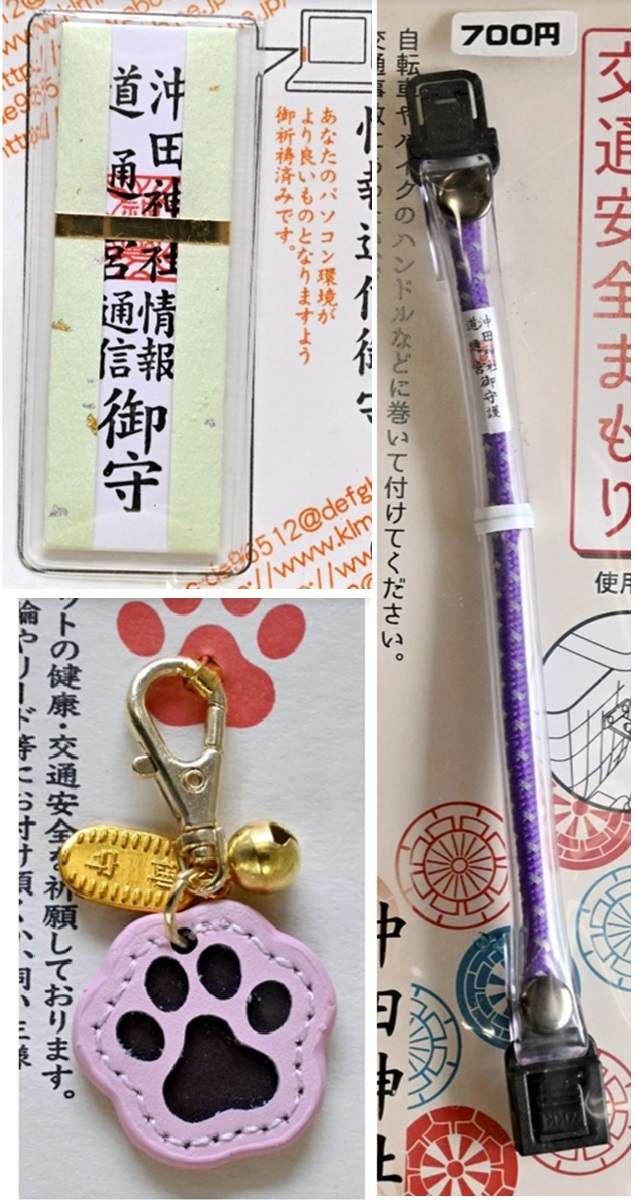
A charm that can be attached to a motorcycle, scooter or bicycle, right, a charm that can be stuck onto a computer, top left, and one that can be attached to a pet’s collar.
Charms featuring Hello Kitty and characters from Dragon Ball and Thomas the Tank Engine are very popular for children.
There are also charms that are inspired by famous people.
Hata placed a special order for a charm to commemorate Hinako Shibuno, a golfer from Okayama Prefecture, winning the British Open in 2019. Hata also placed an order for a charm featuring shogi pieces after Sota Fujii achieved his unprecedented 29th consecutive win. The charm is meant for people who want to win a competition.
Some charms feature certain words. One such charm has “omotenashi,” meaning hospitality, written on it, and is filled with the wish that the person who holds it will be kind. Another charm reads “baigaeshi,” meaning paying back in double, and is meant to wish for even greater blessings. Another charm features the Italian word “amore,” which became a buzz word after a soccer player used it to refer to a woman he was dating, and is meant to wish to find a partner and be together forever.
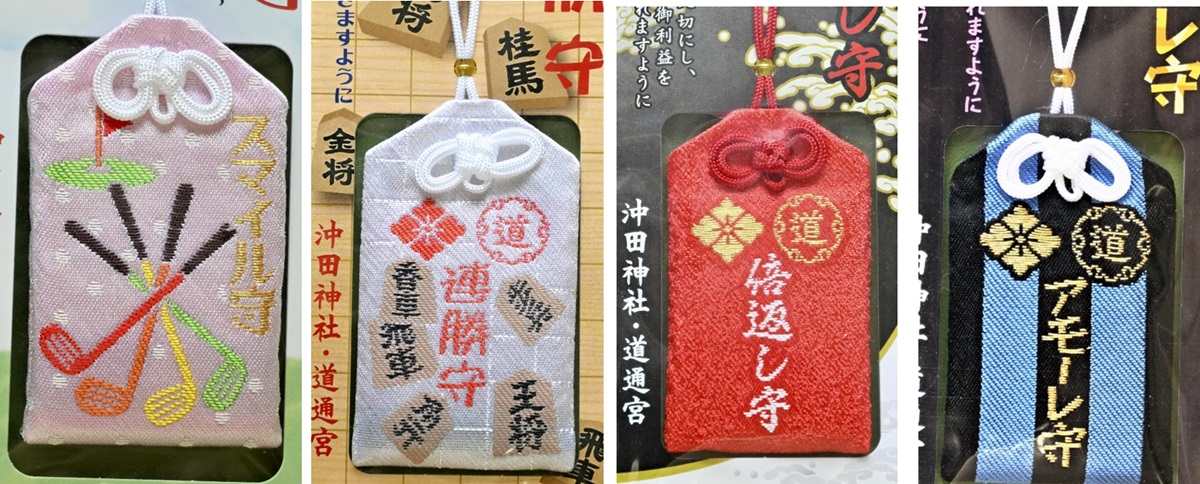
From left, a charm to commemorate Hinako Shibuno’s win, one to celebrate Sota Fujii’s win, a charm featuring the word “baigaeshi” and one with the word “amore.”
About 10 to 20 kinds of charms are added every year, according to Hata’s son, Kazuki, who is the assistant chief priest.
“The number is increasing without my realizing it,” said Kazuki, 44.
Charms are not meant to be kept forever. It is customary to return them to the shrine where you bought them. Some people who return the charms say a ‘thank you’ to them for helping them live that period of time without any issues or illness. Kazuki said his greatest joy comes when he hears such words.
However, do deities actually listen to a person’s wish?
“Deities watch over you while you have the charm,” Kazuki said. “The more effort you put into making your wish come true, rather than just simply expecting deities to help you, the more blessings you will receive from the deities.”
How to get there
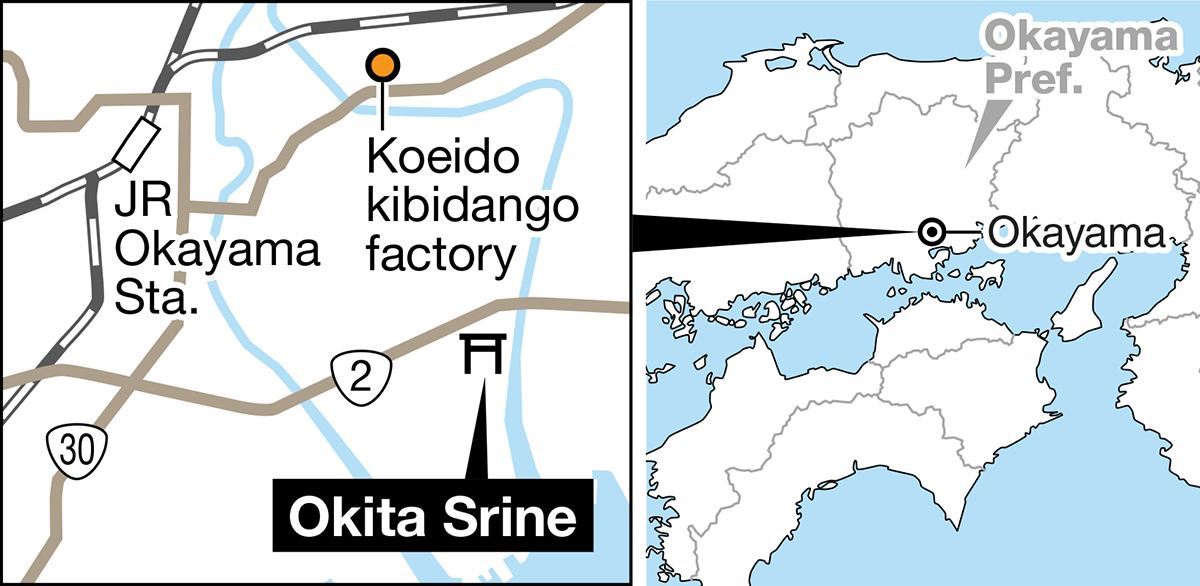
Take a Ryobi bus from JR Okayama Station to Okimoto, and the shrine is located about a three-minute walk away.
The shrine also has yakuwaridama — a prayer to ward off misfortune — in which a person puts their negative thoughts into a dirt ball, which costs ¥100. They then break it by hitting it against a stone.
Kibidango factory
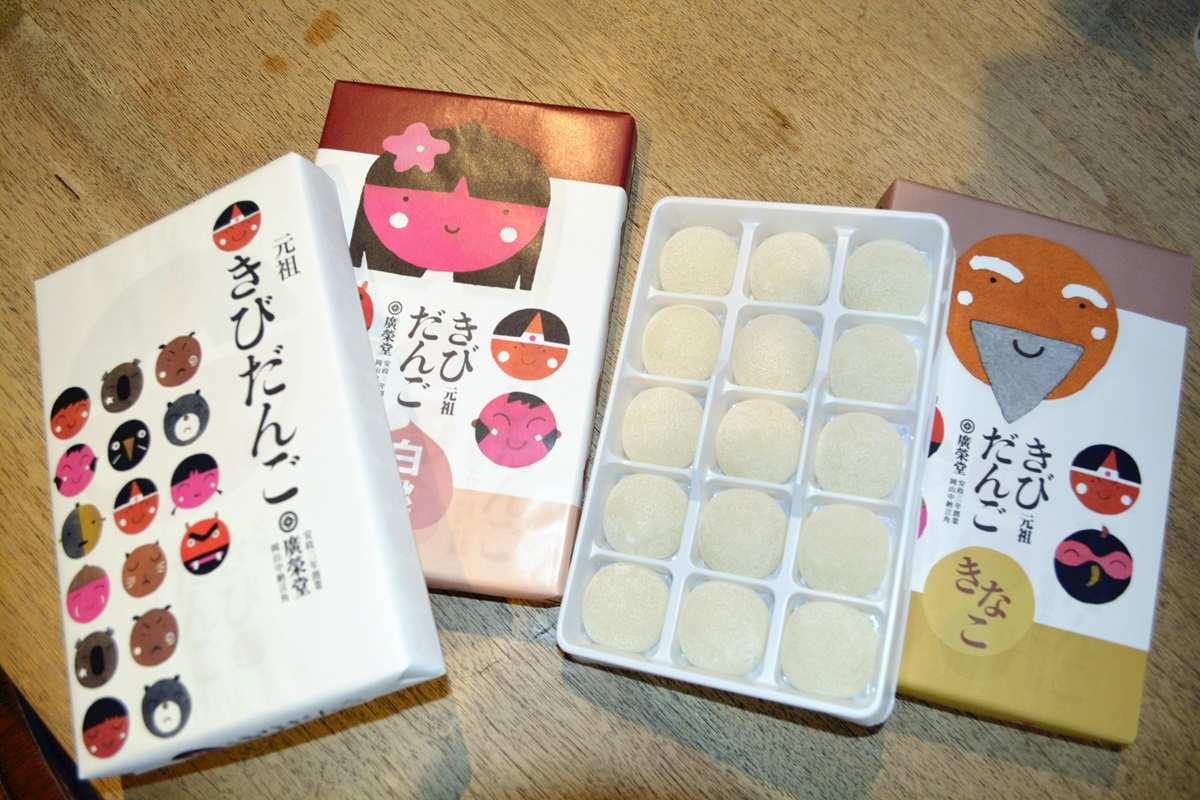
Koeido’s kibidango
Kibidango dumplings are a famous Okayama Prefecture sweet, and there are many kinds made by various confectioneries on sale at train stations souvenir shops.
Koeido, a confectionery that has been around since 1856, sells 15 standard kibidango for ¥729, including tax. The shop also sells other flavors, including peach, kinako roasted soybean flour and matcha.
The main factory, which is located about a 15-minute drive from Okita Shrine, offers tours where visitors can see the process of kneading rice, sugar, syrup and millet.
The factory tour is only available in July and from September through early December. Reservations are required, and only one group of 10 to 40 people is allowed per day.
Related Tags
"Features" POPULAR ARTICLE
-

Sanrio to Open Museum in Yamanashi Pref. Dedicated to Founder, Exhibits Include Hello Kitty, Other Characters
-

Autumn Foliage Surrounds Visitors to Tokyo’s Showa Kinen Park
-

My Daughter No Longer Speaks to Me, But I Want to See Her and My Grandchild
-

Kumamoto: Public Bath Refurbished as Library Where You Can Chat, Take Photos
-

Frozen Vegetables: Demand Rises for Convenient, Tasty Domestic Produce
JN ACCESS RANKING
-

Keidanren Chairman Yoshinobu Tsutsui Visits Kashiwazaki-Kariwa Nuclear Power Plant; Inspects New Emergency Safety System
-

Imports of Rare Earths from China Facing Delays, May Be Caused by Deterioration of Japan-China Relations
-

University of Tokyo Professor Discusses Japanese Economic Security in Interview Ahead of Forum
-

Japan Pulls out of Vietnam Nuclear Project, Complicating Hanoi’s Power Plans
-

Govt Aims to Expand NISA Program Lineup, Abolish Age Restriction





